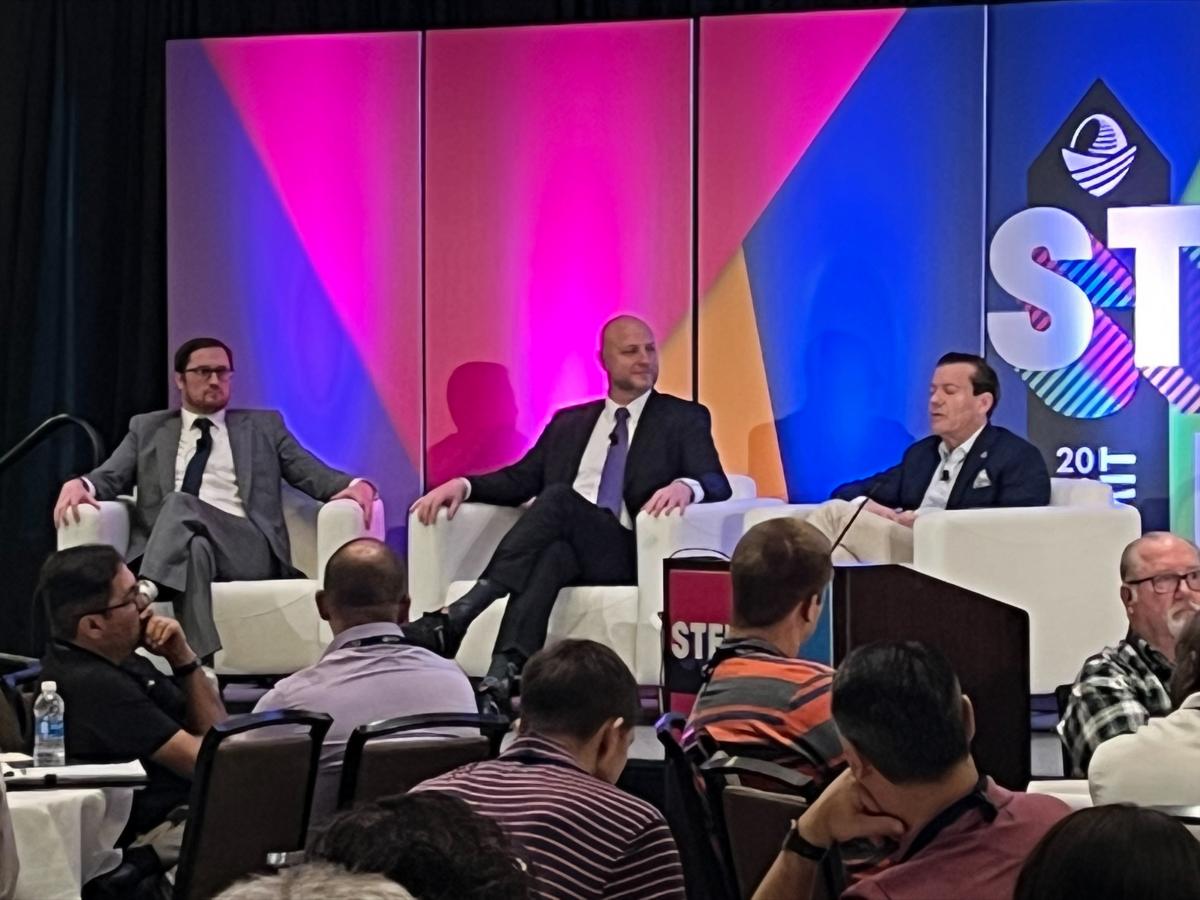

Are retirement plans SECURE? American Retirement Association CEO Brian Graff, NTSA Executive Director Nathan Glassey, and ARA Director of Federal and State Legislative Affairs Andrew Remo at the Feb. 26 opening session of the 2023 NTSA Summit in Tampa, FL discussed Washington’s take on that. And, for good measure, they also looked at some developments on the state level.
Following are highlights of the discussion.
SECURE
When SECURE 1.0 was enacted in late December 2019, said Graff, Congress focused on fixes that applied to plan sponsors and factors affecting those with plans. However, since then there has been “much more attention to the coverage gap” between those with coverage and those without.
“What we know is that workplace saving is the gateway for people to save for a secure retirement,” said Graff.
Graff noted that 45% of employees lack access to an employer-provided plan, so now the emphasis is on encouraging saving and getting more people to participate. “These are themes that are very prevalent” in SECURE 2.0, he remarked.
Auto-Enrollment
“There is a huge amount of interest in auto-enrollment,” Graff noted. Under SECURE 2.0, auto-enrollment is required for defined contribution plans established after the date the measure was enacted, Dec. 29, 2022, beginning with the 2025 plan year. They are to be enrolled at a contribution rate of between 3% and 10%, which is to increase by 1% per year to at least 10%, but not more than 15%. There are certain exceptions, however:
- employers with fewer than 10 employees;
- businesses less than three years old; and
- churches and governments.
“One of the big mysteries is how we’re going to move with auto-enrollment,” said Graff, adding that in the future it could be expanded further.
Starter 401(k)s
Under SECURE 2.0, starter 401(k)s:
- are available to employers with no retirement plan;
- generally must cover all employees;
- auto-enroll employees, at a contribution rate of 3% to 15% with auto-escalation after 2025;
- are not subject to ADP testing or top-heavy testing;
- are subject to a $6,000 limit on annual deferrals; and
- are available beginning in 2024.
Service providers are realizing that with starter 401(k)s and 403(b)s, participants are individual business opportunities, Graff said to attendees, adding, “Don’t lose sight of that.”
Tax Credits
SECURE 2.0 provides for a small employer pension plan start up credit and a start-up credit for adopting a multiple-employer plan. And, effective in 2027, it also enhances the saver’s credit by:
- increasing the income threshold;
- simplifying the calculation;
- requiring that funds be deposited in a retirement plan unless they are under $100; and
- promoting awareness.
The saver’s credit provisions are real, Graff said. “It’s going to happen.” And the result, he said, will be billions of dollars going into teachers’ retirement savings accounts.
Long-Term Part-Time Employees
Under SECURE 2.0, beginning with the 2025 plan year, employers must allow deferrals for LTPT employees after two years and 500 hours of work .
Catch-up Provisions
Now, a participant to have employer contributions as Roth contributions; it is unclear, however, whether an employer who offers Roth contributions must offer the Roth option. This is a moment to go back and talk with educators about the benefits of Roths, Graff suggested.
Beginning in 2024, age-based catch-ups will be required to be Roths for participants who made more than $145,000 in the previous year; in addition, Roths must be offered to others, as well.
And beginning with the 2025 plan year, catch-up contribution limits will be $10,000 or 150% of the indexed 2024 catch-up limit, for the years a participant attains age 60-63.
State Potpourri
“So much is going on in the states,” remarked Glassey, adding that “we have to pay attention to all of it.” For instance:
- Glassey discussed the testimony he and NTSA President-Elect Toni Whaley presented before the Maryland Senate’s Budget and Taxation Sub-Committee on Jan. 19 concerning the Maryland Teachers and State Employees Supplemental Retirement Plans - Automatic Enrollment Act, a bill that would mandate auto-enrollment for teachers and state employees in supplemental 457(b) or 403(b) retirement plans.
- In Utah, legislation that would require auto-enrollment into a 401(k) with an auto-escalation feature and also provide for a match has slowed down, Glassey said, when it was pointed out that 403(b)s and 457s were not included in the reach of the bill.
Graff stressed the importance of local activity as well. He remarked that school boards are especially important in the matter of providing teachers with access to more than one vendor, and that they respond when people testify at hearings. “Access to the advisor is so vital to the success of public school teachers in saving for retirement,” he said.
- Log in to post comments
